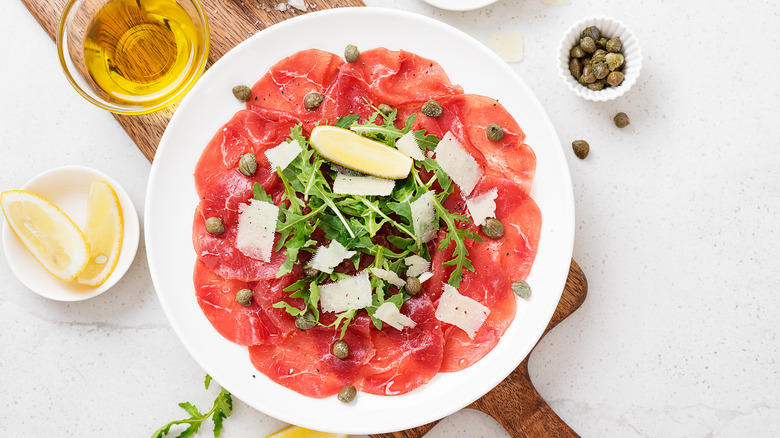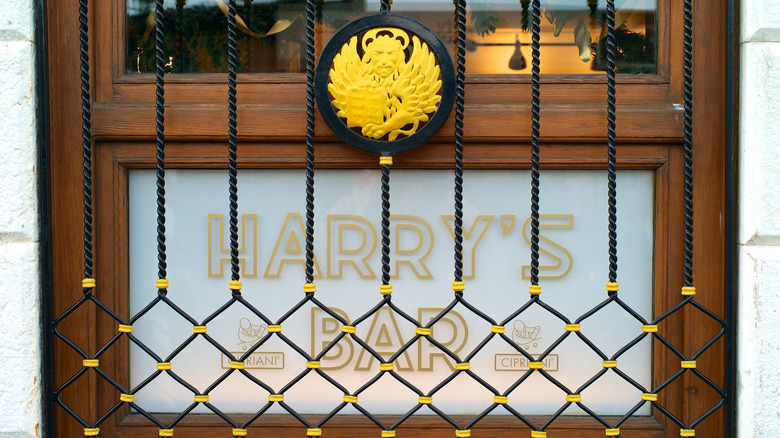The Origin Of Carpaccio May Have Begun With A Countess
Even if you've never had the pleasure of eating beef carpaccio, you've more than likely heard the name and at least know what it looks like. A well-prepared carpaccio is nothing short of a work of art with beautiful, deep red, paper-thin slices of beef arranged on a plate with capers, Parmesan cheese, olive oil, salt, pepper, lemon juice, and a little arugula. But how exactly did it come into being?
Italy, after all, has no shortage of raw meat dishes. There's pesce crudo, an assortment of raw fish seasoned lightly with olive oil and citrus. Then there is the carne cruda all'albese, the Italian version of France's steak tartare. Originating in the northern Italian region of Piedmont, the carne cruda is a mince of top-quality raw beef mixed with olive oil, salt, pepper, lemon, and a hint of garlic, topped with Parmesan.
The connection of carne cruda all'albese is essential to the development of carpaccio as carpaccio was based on this dish. For it was in Venice where a young restaurateur from Verona invented beef carpaccio at the request of a countess with an unusual dietary restriction. The man's name was Giuseppe Cipriani, and his establishment was known simply as Harry's Bar.
Carpaccio is the raw-meat dish that followed the doctor's orders
Harry's Bar was a veritable who's-who of the 20th century's most famous names. Regulars included Ernest Hemingway, Gary Cooper, Joe di Maggio, and Truman Capote, just to name a few. Beef carpaccio comes into the story during the '50s with a visit from another regular, Countess Amalia Nani Mocenigo.
The Countess, on her doctor's orders, was not permitted to eat cooked meat. So, on her visit to Harry's, she asked Cipriani if he could devise a dish that met her doctor's parameters but was also flavorful. Inspired by carne cruda all'albese, Cipriani returned from the kitchen with thinly sliced, raw beef topped with shaved Parmesan, capers, olive oil, salt, pepper, and arugula. It was the first carpaccio.
As history shows, Cipriani's creation took off. Named as such for the Renaissance painter Vittore Carpaccio, who loved the color red, beef carpaccio is simple yet elegant enough to please even the stiffest aristocrat. And undoubtedly, the best way to enjoy it is out on the lagoon, in Venice, at Harry's Bar.

